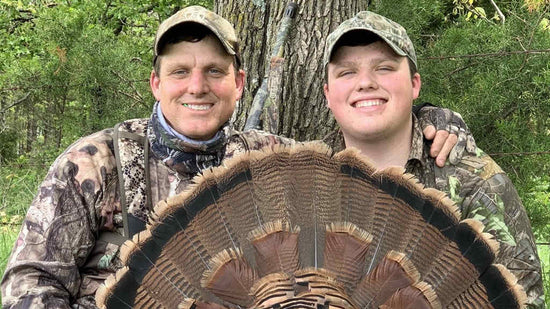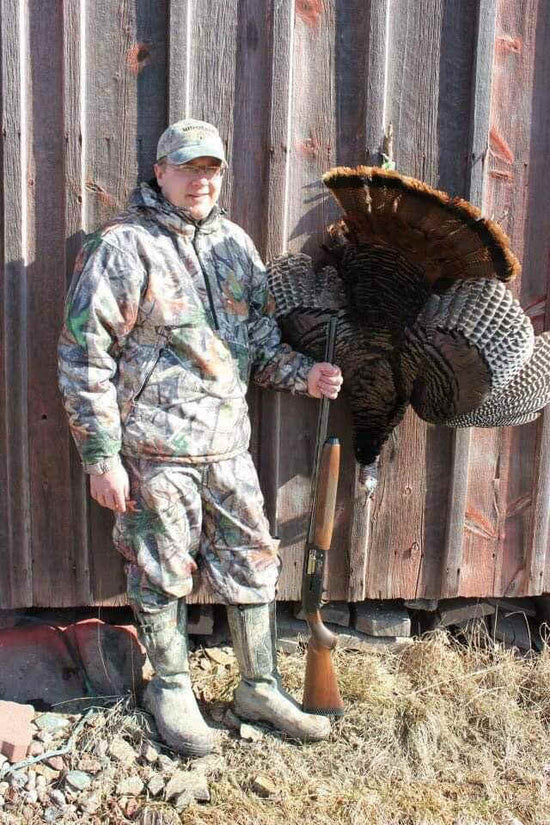Hunting can be confusing; if everything is lined up perfectly, they are extremely easy birds to hunt. But all it takes is one thing to be thrown off, and now you’re left empty-handed. One of the things that you must get just right is the correct use of Tom decoys. When and where you use them is very important because if you set a Tom decoy at the wrong time, you can drive away the birds. There are three main things to keep in mind regarding the use of Tom decoys: what point of the season you are in, the patterns of the birds you’re hunting, and knowing how you want the bird to react to your decoy.
First and perhaps the most important is being cognizant of the time of season in which you are hunting. You would not want to use a Tom decoy at the beginning of the season, as Toms are looking for mates during this time and have no interest in fighting with another male. So, you are best off using hen decoys during this time. In mid-season, you want to start to transition into full strut decoys, including Jakes and Toms. At this point in the season, mature Toms are looking to compete for hens with other males, and seeing a Jake or Tom decoy could entice them toward you and your setup. This is when I usually introduce the scoot-and-shoot decoy, and I find that the birds start to react better to this decoy at this point in the season. And in my opinion, hunting with this decoy is one of the most exhilarating ways to hunt any animal. Once you get into the late season, it’s all about being at the right place at the right time. Because the breeding season is slowing down, Toms gobble and move around less. They are more likely to stick around their roosting area. Because of this, you want to experiment with different tactics and hope that you get lucky. My biggest piece of advice? Get an early-season tag.
With turkey hunting, you want to scout your area and observe the birds to figure out their patterns. Where they’re roosting, what area do they move to during the day, etc. It is fundamental to do this because it sets you up with the biggest chance of success. Your best bet for harvesting a bird is to see where they are roosting at night and set up in that immediate area. If you are setting up right under a Tom’s roost, you wouldn’t even want to use a decoy because it would appear more natural and a more inviting place to land from their roost without any decoys. You also need to pay attention to the age of the birds you are looking to harvest. If the birds are more mature, then you want to use more mature-looking decoys, and vice versa for younger birds. If you are looking to harvest Jake but are using mature Tom decoys, this could intimidate them, and they will steer clear of your setup and decoys.
Once you identify the time of the season and the patterns of the birds you’re scouting, you can tailor your decoy choice to how you want the bird to react. Keep in mind that Tom decoys are likely to get Toms riled up and aggressive. You can also use them to distract the bird. Turkeys have keen eyes and will often see you or your blind and steer clear. By using a Tom or Jake decoy in addition to a hen decoy, you will prey upon the bird’s desire to strut and show off to the hen in front of another male. This strategy can keep the bird’s attention on the decoys and not on your blind. When keeping their reaction in mind, know that because Tom decoys make the birds more aggressive, they will often come in very quickly, and therefore, you need to be always ready. Being ready to take the shot at any moment could be the difference between a harvest or a miss. Being observant and on the edge of your seat will only aid you.
Tom decoys can be a huge help in filling your tag, so long as you know how to use them properly. And keep in mind what works one day might not work the next. Be ready to pivot, but always keep the time of season in mind. Learning what the birds in your area do and react best to is great if you adapt to your findings. I will leave you with some advice a family friend once gave me, “Don’t overthink it, turkey’s brains are the size of a pea.”















